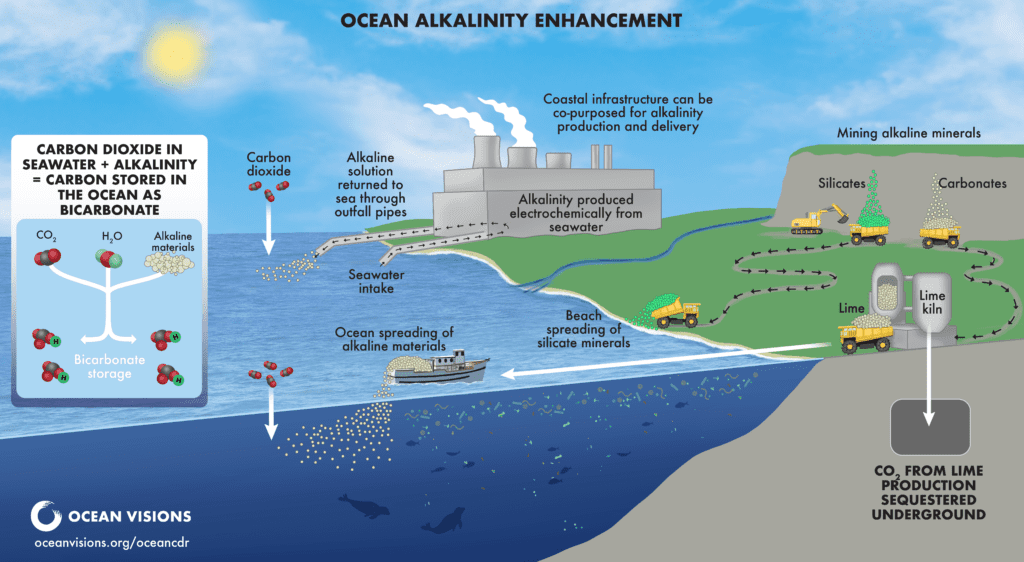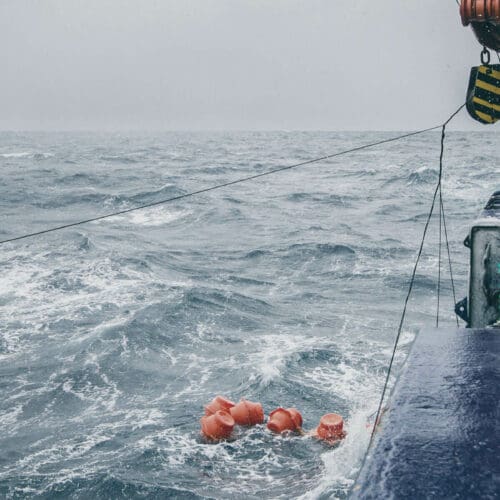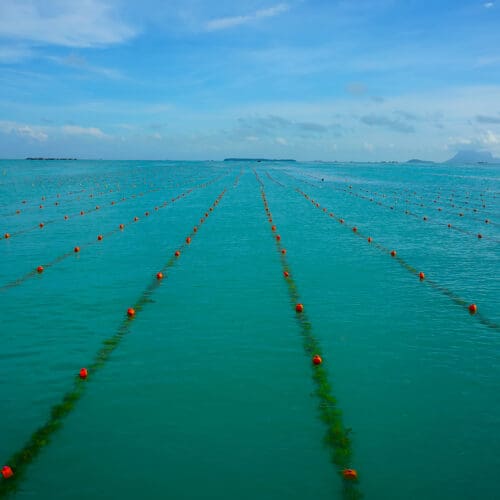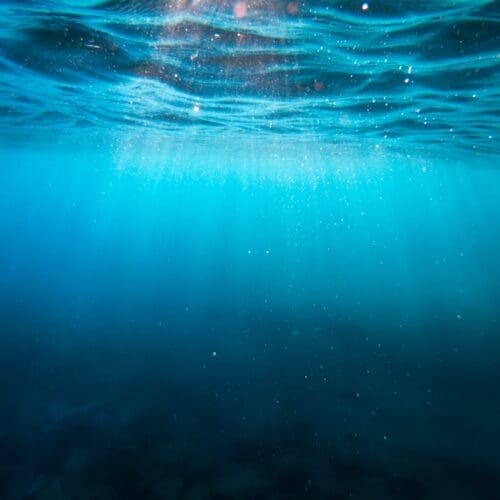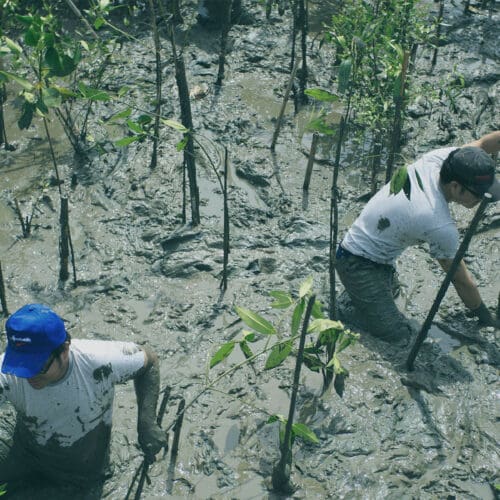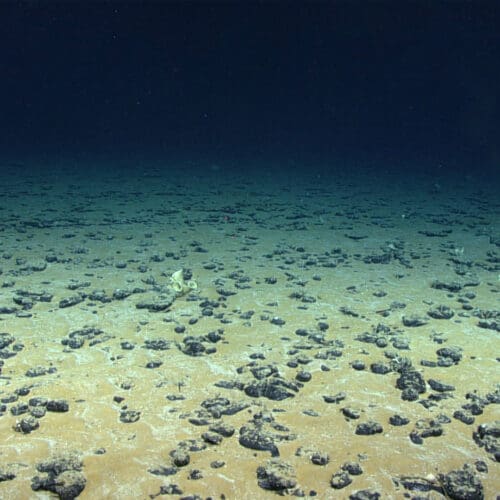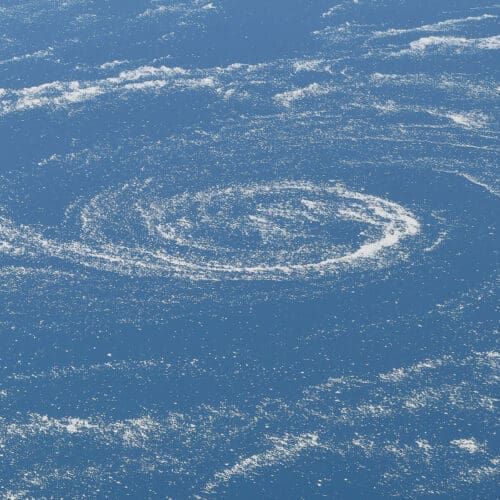Ocean Alkalinity Enhancement Overview
Ocean alkalinity enhancement is an approach to carbon removal that involves adding alkaline substances to seawater to accelerate the ocean’s natural carbon sink. Adding alkalinity to the ocean converts dissolved inorganic CO2 in seawater into bicarbonates and carbonates, which are stable forms of carbon with a lifetime of approximately 10,000 years. The resulting CO2 deficit in surface waters is quickly rebalanced via a net movement of atmospheric CO2 into the ocean, to reestablish equilibrium.
This process occurs naturally over geologic time as alkalinity is produced through the slow weathering of rocks, such as limestone or basalt, and subsequent runoff of the alkaline molecules into the ocean. We may be able to greatly enhance this process via human-caused additions of alkaline material. Billions of tons of alkaline minerals such as olivine, basalt, and carbonate are readily available to be mined and could be applied to beaches or the open ocean. This “enhanced weathering” could theoretically increase CO2 sequestration in the ocean.
